What can be said about .jaff, .wlu or .sVn file extension
Jaff ransomware virus is a file-encrypting malware, known as ransomware in short. If ransomware was something you have never heard of until now, you are in for a shock. Ransomware uses powerful encryption algorithms for file encryption, and once they’re locked, your access to them will be prevented. 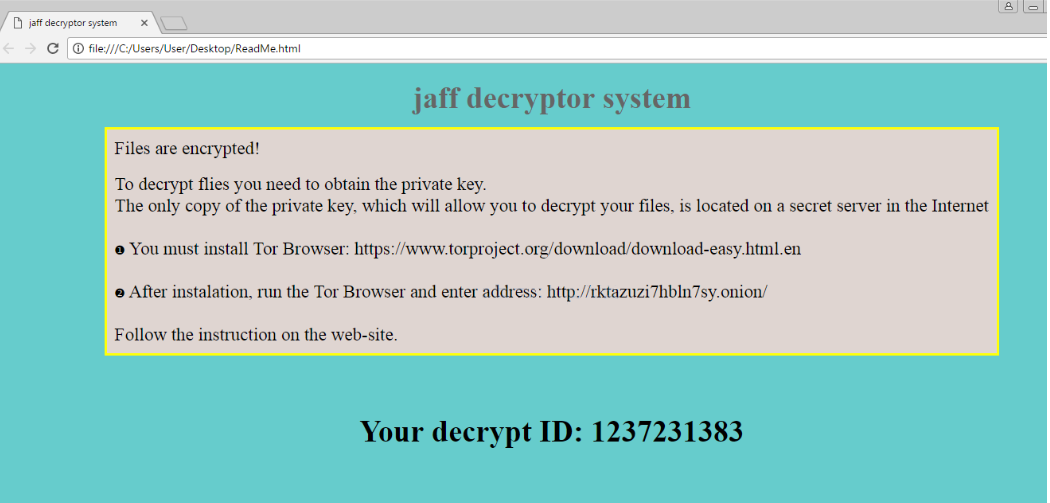
During this process, the virus adds either .jaff, .wlu or .sVn file extension after the original file extension. The virus then saves ReadMe.bmp file and sets it as desktop wallpaper, and drops a ransom note.
Data encrypting malicious software is thought to be one of the most harmful infections you can find because file restoration isn’t possible in every case. There is also the option of paying the ransom but for various reasons, that isn’t the best choice. Data decryption even after payment is not guaranteed so you may just be spending your money for nothing. What’s preventing cyber criminals from just taking your money, and not providing a decryptor. Additionally, that money would go into future data encoding malware and malware projects. It’s already estimated that file encoding malware did billions worth of damage to businesses in 2017, and that’s an estimation only. And the more people comply with the demands, the more of a profitable business ransomware becomes, and that attracts many people to the industry. Investing the money that is demanded of you into some kind of backup might be a wiser option because file loss would not be an issue. You can then just erase Jaff ransomware virus virus and restore data from where you are storing them. And in case you are wondering how the ransomware managed to corrupt your device, we’ll explain its distribution ways in the following paragraph.
Jaff ransomware virus distribution methods
Frequently, file encrypting malware is spread via spam emails, exploit kits and malicious downloads. Quite a lot of ransomware rely on user carelessness when opening email attachments and more sophisticated methods are not necessarily needed. That doesn’t mean that distributors do not use more sophisticated methods at all, however. Crooks do not need to do much, just write a simple email that less cautious people may fall for, attach the contaminated file to the email and send it to potential victims, who may believe the sender is someone credible. You will frequently come across topics about money in those emails, as those types of sensitive topics are what people are more inclined to fall for. Frequently, hackers pretend to be from Amazon, with the email notifying you that there was unusual activity in your account or some type of purchase was made. You have to look out for certain signs when opening emails if you wish to shield your system. It is critical that you make sure the sender is reliable before you open their sent attached file. If the sender turns out to be someone you know, don’t rush into opening the file, first cautiously check the email address. Be on the lookout for grammatical or usage mistakes, which are usually pretty obvious in those emails. The way you’re greeted might also be a hint, a real company’s email important enough to open would use your name in the greeting, instead of a universal Customer or Member. Infection is also possible by using certain weak spots found in computer programs. A program has certain vulnerabilities that could be exploited for malicious software to get into a computer, but they’re patched by vendors soon after they’re found. Nevertheless, not everyone is quick to update their software, as may be seen from the WannaCry ransomware attack. Situations where malicious software uses weak spots to enter is why it’s important that your software are regularly updated. You can also choose to install updates automatically.
How does Jaff ransomware virus act
If the ransomware infects your computer, it’ll look for certain file types and once they’ve been identified, it’ll encrypt them. Initially, it might not be clear as to what is going on, but when your files can’t be opened as normal, you will at least know something isn’t right. Files which have been encoded will have a file extension added to them, which helps people identify which ransomware they have. Your data may have been encoded using powerful encryption algorithms, which might mean that data is permanently encrypted. In the ransom note, crooks will tell you that they’ve locked your data, and propose you a way to decrypt them. You will be proposed a decryption tool, for a price obviously, and criminals will state that using other file recovery options could lead to permanently damaged data. If the price for a decryption tool is not specified, you’d have to contact the hackers via email. For the reasons we have already mentioned, we do not encourage paying the ransom. Try out every other possible option, before you even consider giving into the demands. Maybe you’ve made backup but just forgotten about it. For certain ransomware, users could even find free decryptors. If the file encrypting malicious software is decryptable, a malware researcher might be able to release a utility that would unlock Jaff ransomware virus files for free. Take that into consideration before you even think about giving into the demands. If you use some of that money on backup, you would not be put in this kind of situation again as your data would be stored somewhere secure. If you had saved your most important files, you just erase Jaff ransomware virus virus and then restore data. If you are now familiar with ransomware, preventing an infection should not be difficult. You primarily have to keep your software up-to-date, only download from safe/legitimate sources and not randomly open email attachments.
Ways to eliminate Jaff ransomware virus
Implement a malware removal tool to get rid of the file encoding malware if it is still in your system. It can be quite difficult to manually fix Jaff ransomware virus virus because a mistake might lead to further harm. So as to prevent causing more damage, go with the automatic method, aka an anti-malware software. These kinds of programs are made with the intention of detecting or even stopping these kinds of threats. Once the malware removal program of your choice has been installed, simply perform a scan of your tool and if the threat is found, permit it to terminate it. It ought to be said that an anti-malware program will only terminate the threat, it will not assist in file decrypting. After the threat is gone, make sure you regularly make backup for all data you don’t wish to lose.
Offers
Download Removal Toolto scan for Jaff ransomware virusUse our recommended removal tool to scan for Jaff ransomware virus. Trial version of provides detection of computer threats like Jaff ransomware virus and assists in its removal for FREE. You can delete detected registry entries, files and processes yourself or purchase a full version.
More information about SpyWarrior and Uninstall Instructions. Please review SpyWarrior EULA and Privacy Policy. SpyWarrior scanner is free. If it detects a malware, purchase its full version to remove it.

WiperSoft Review Details WiperSoft (www.wipersoft.com) is a security tool that provides real-time security from potential threats. Nowadays, many users tend to download free software from the Intern ...
Download|more


Is MacKeeper a virus? MacKeeper is not a virus, nor is it a scam. While there are various opinions about the program on the Internet, a lot of the people who so notoriously hate the program have neve ...
Download|more


While the creators of MalwareBytes anti-malware have not been in this business for long time, they make up for it with their enthusiastic approach. Statistic from such websites like CNET shows that th ...
Download|more
Quick Menu
Step 1. Delete Jaff ransomware virus using Safe Mode with Networking.
Remove Jaff ransomware virus from Windows 7/Windows Vista/Windows XP
- Click on Start and select Shutdown.
- Choose Restart and click OK.

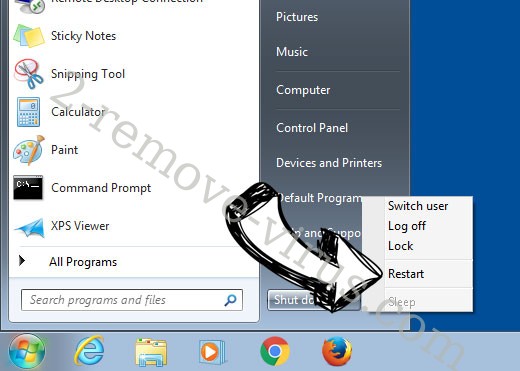
- Start tapping F8 when your PC starts loading.
- Under Advanced Boot Options, choose Safe Mode with Networking.

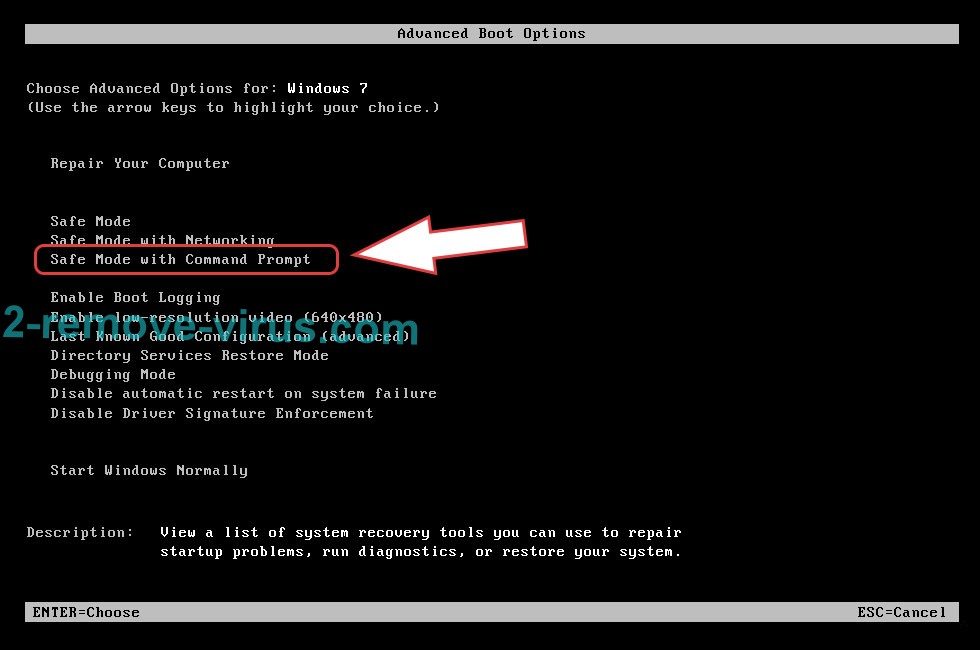
- Open your browser and download the anti-malware utility.
- Use the utility to remove Jaff ransomware virus
Remove Jaff ransomware virus from Windows 8/Windows 10
- On the Windows login screen, press the Power button.
- Tap and hold Shift and select Restart.

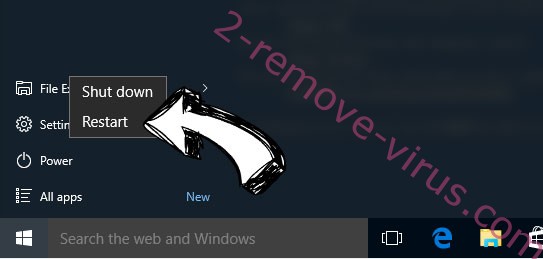
- Go to Troubleshoot → Advanced options → Start Settings.
- Choose Enable Safe Mode or Safe Mode with Networking under Startup Settings.

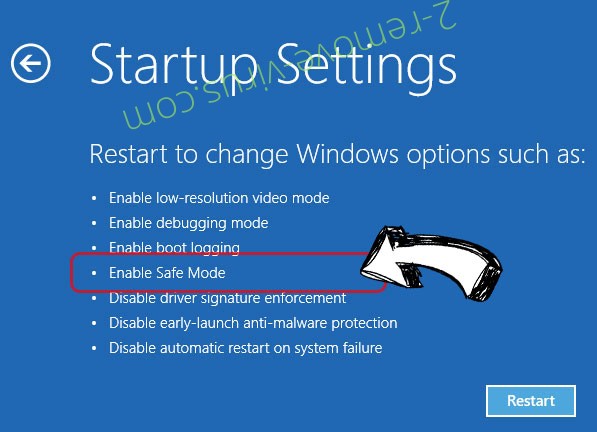
- Click Restart.
- Open your web browser and download the malware remover.
- Use the software to delete Jaff ransomware virus
Step 2. Restore Your Files using System Restore
Delete Jaff ransomware virus from Windows 7/Windows Vista/Windows XP
- Click Start and choose Shutdown.
- Select Restart and OK


- When your PC starts loading, press F8 repeatedly to open Advanced Boot Options
- Choose Command Prompt from the list.

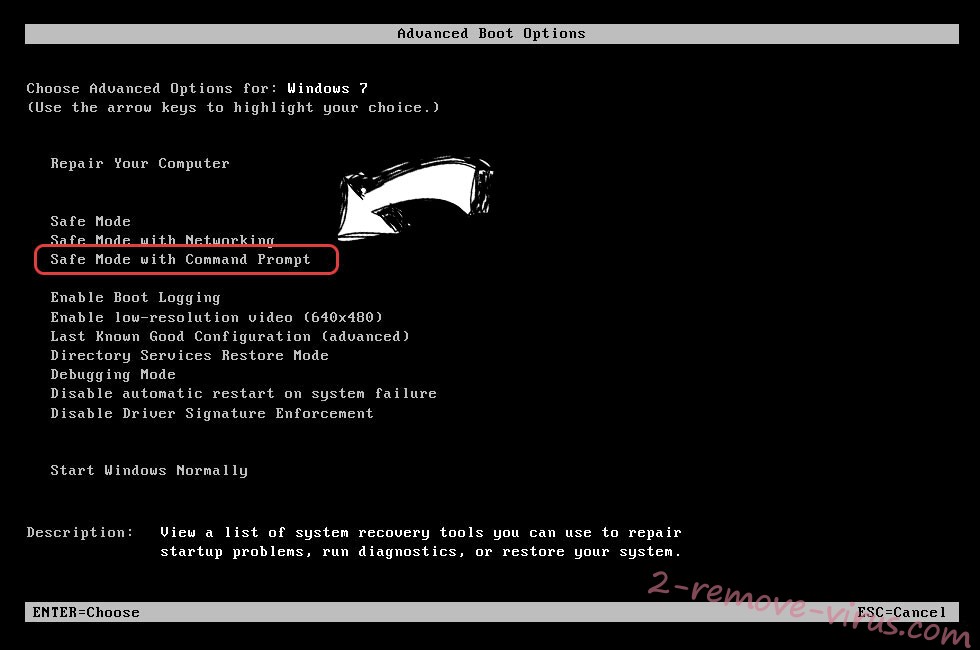
- Type in cd restore and tap Enter.

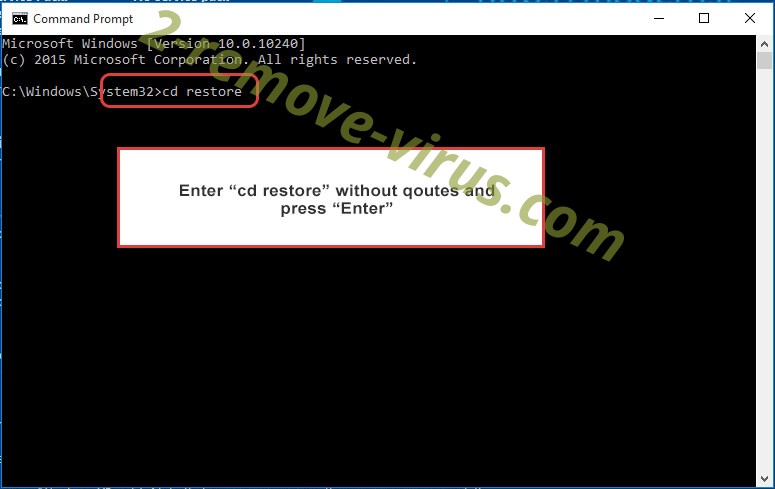
- Type in rstrui.exe and press Enter.

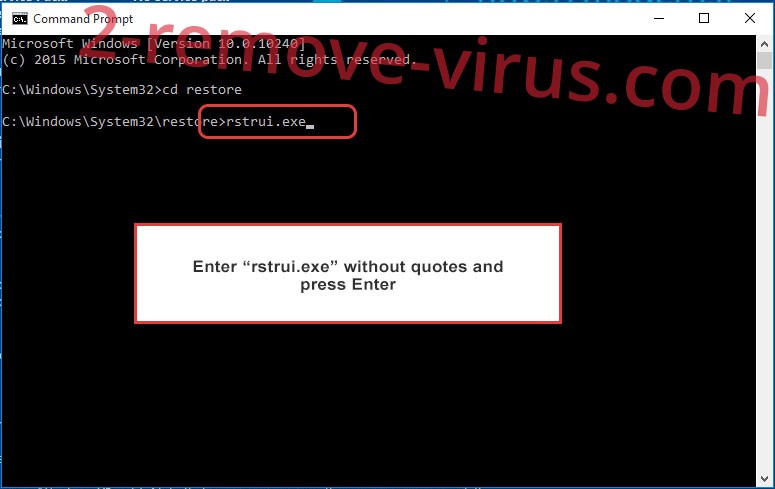
- Click Next in the new window and select the restore point prior to the infection.

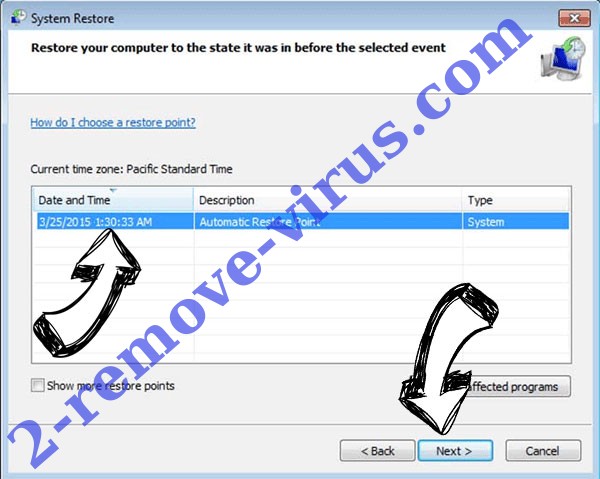
- Click Next again and click Yes to begin the system restore.

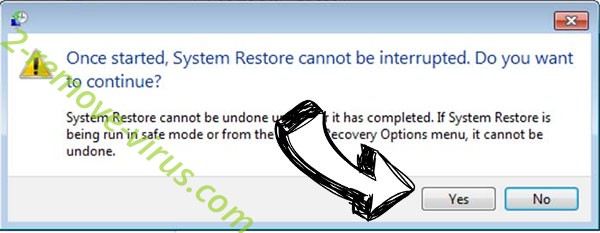
Delete Jaff ransomware virus from Windows 8/Windows 10
- Click the Power button on the Windows login screen.
- Press and hold Shift and click Restart.


- Choose Troubleshoot and go to Advanced options.
- Select Command Prompt and click Restart.

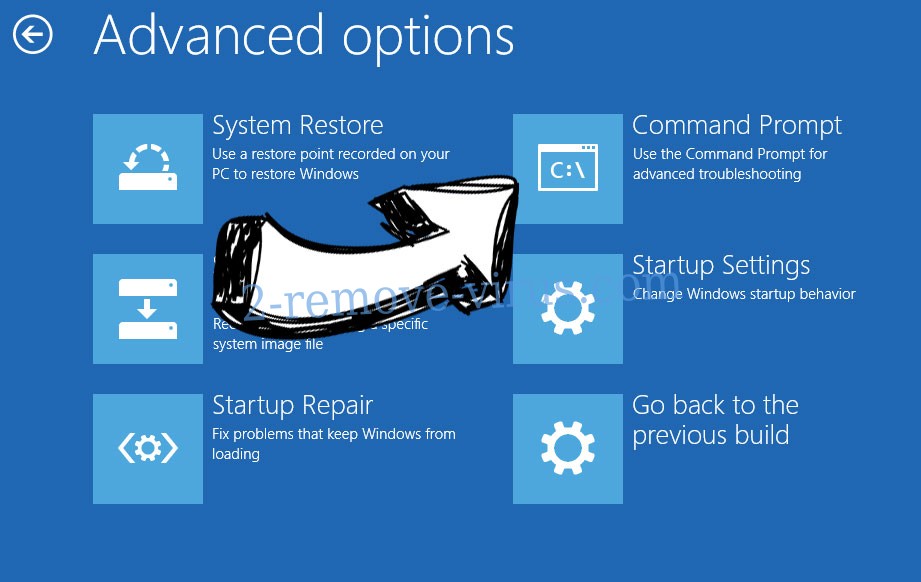
- In Command Prompt, input cd restore and tap Enter.


- Type in rstrui.exe and tap Enter again.


- Click Next in the new System Restore window.

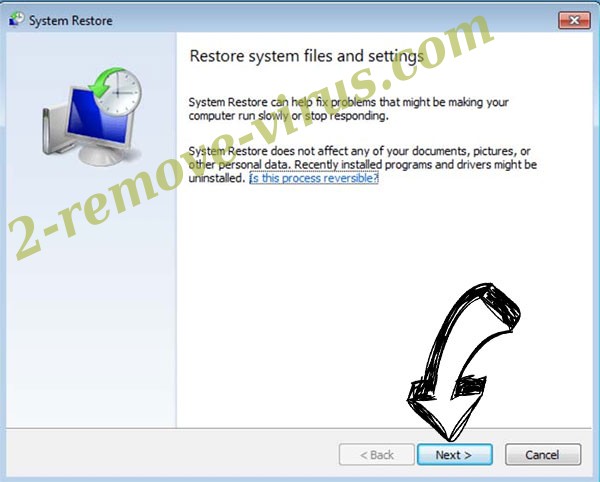
- Choose the restore point prior to the infection.


- Click Next and then click Yes to restore your system.


Site Disclaimer
2-remove-virus.com is not sponsored, owned, affiliated, or linked to malware developers or distributors that are referenced in this article. The article does not promote or endorse any type of malware. We aim at providing useful information that will help computer users to detect and eliminate the unwanted malicious programs from their computers. This can be done manually by following the instructions presented in the article or automatically by implementing the suggested anti-malware tools.
The article is only meant to be used for educational purposes. If you follow the instructions given in the article, you agree to be contracted by the disclaimer. We do not guarantee that the artcile will present you with a solution that removes the malign threats completely. Malware changes constantly, which is why, in some cases, it may be difficult to clean the computer fully by using only the manual removal instructions.
